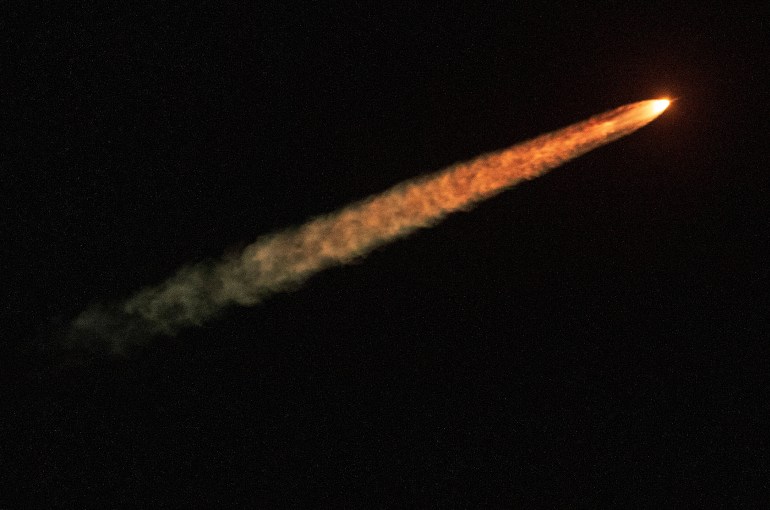NASA’s Orion capsule is due to splash down in the Pacific Ocean after wrapping up a three-week test flight that included a close pass at the Moon and a journey further into space than any previous habitable spacecraft.
The capsule is expected to splash down at 17:39 GMT on Sunday (9:39am local time) off the Mexican island of Guadalupe.
Orion’s launch last month – with a simulated crew of three mannequins – kicked off NASA’s Artemis programme, which aims to take people back to the Moon and prepare for an onward trip, someday, to Mars.
So far, Orion’s flight has gone very well, according to NASA.
In late November, the capsule reached its farthest point in space, venturing 432,210km (268,563 miles) from Earth while midway through its 25-day mission. That is nearly 32,187km (20,000 miles) beyond the record distance set by the crew of Apollo 13 in 1970, which aborted its lunar landing and returned to Earth after a nearly catastrophic mechanical failure.
On Monday, Orion sailed within 130km (80 miles) of the lunar surface, achieving the closest approach to the Moon for a spacecraft built to carry humans since Apollo 17 flew half a century ago.
But, it is only in the final minutes of Orion’s voyage on Sunday that the true challenge comes – seeing if the capsule’s heat shield, the biggest ever built, actually holds up.
The spacecraft – which is expected to hurtle into the Earth’s atmosphere at a speed of 40,000kmph (25,000mph) – will have to withstand a temperature of 2,800 degrees Celsius (5,072 degrees Fahrenheit) – about half that of the surface of the sun.

The first test of the capsule was carried out in 2014 but then the capsule stayed in Earth’s orbit, so it came back into the atmosphere at a slower speed of about 32,187kmph.
Mike Sarafin, Artemis’s mission manager, said Orion’s heat shield was “a safety-critical piece of equipment”.
“It is designed to protect the spacecraft and the passengers, the astronauts on board. So the heat shield needs to work,” he said.
NASA has dispatched a US navy ship, the USS Portland, as well as helicopters and inflatable boats to recover the Orion capsule.
Once it is in the water, NASA will let Orion float for two hours – a lot longer than if astronauts were inside – so as to collect data that is crucial for future missions.
“We’ll see how the heat soaks back into the crew module and how that affects the temperature inside,” said Jim Geffre, NASA’s Orion vehicle integration manager.
Other information to be collected includes the condition of the vessel after its flight, data from monitors that measure acceleration and vibration, and the performance of a special vest put on a mannequin in the capsule to test how to protect people from radiation while flying through space.
If the mission succeeds, a crewed Artemis II flight around the Moon and back could come as early as 2024, but still without landing on it.
NASA is expected to name the astronauts selected for this trip soon.
Artemis III, scheduled for 2025, will see a spacecraft land for the first time on the south pole of the Moon, which features water in the form of ice.
Only 12 people – all of them white men – have set foot on the Moon. They did this during the Apollo missions, the last of which was in 1972.
Artemis is scheduled to send a woman and a person of colour to the Moon for the first time.
NASA’s goal is to establish a lasting human presence on the Moon through a base on its surface and a space station circling around it.
Having people learn to live on the Moon should help engineers develop technologies for a years-long trip to Mars, maybe in the late 2030s.
 Top Naija News: Nigerian News, Breaking News Nigeria and World News Top Naija News is a daily news publication in Nigeria, delivering the latest breaking news in Nigeria and around the world.
Top Naija News: Nigerian News, Breaking News Nigeria and World News Top Naija News is a daily news publication in Nigeria, delivering the latest breaking news in Nigeria and around the world.



